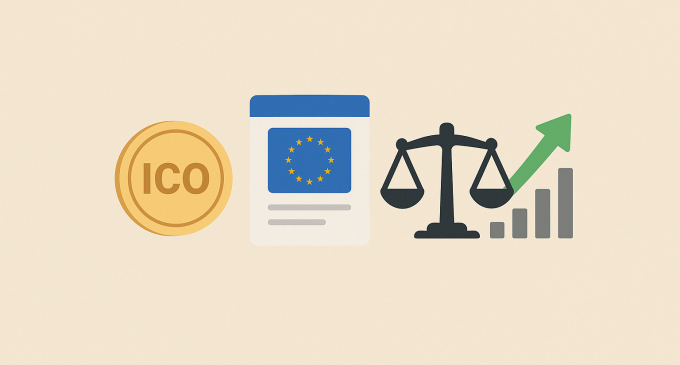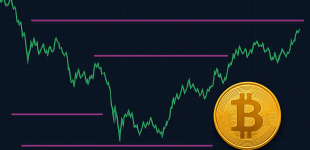
Introduction
The Initial Coin Offering (ICO), once seen as the Wild West of crypto fundraising, is witnessing a revival across Europe. This resurgence comes in the wake of the European Union’s implementation of the Markets in Crypto-Assets (MiCA) regulatory framework, which has introduced legal clarity and investor protections that were previously lacking. For years, ICOs were a cautionary tale—a high-risk, high-reward model marred by scams and legal uncertainty. But as of mid-2025, the landscape has changed dramatically.
With MiCA now in effect, European crypto startups and investors alike are embracing ICOs once again, confident in a more structured and compliant environment. From blockchain gaming projects in Germany to decentralized finance (DeFi) platforms in France and clean energy token initiatives in the Nordics, ICO activity has picked up significantly. Analysts suggest that this marks not only a resurgence in ICO-based fundraising but also a major milestone in the institutionalization of crypto innovation within the European Union.
Understanding MiCA: The Game-Changer In Crypto Regulation
MiCA, or the Markets in Crypto-Assets Regulation, was proposed by the European Commission in 2020 and formally adopted by the European Parliament in 2023. It came into force gradually through 2024 and 2025. MiCA is designed to create a comprehensive regulatory framework for crypto-assets across all 27 EU member states, harmonizing the fragmented legal approaches that previously plagued the market.
Among its many provisions, MiCA mandates:
Licensing for crypto-asset service providers (CASPs).
Disclosure requirements for whitepapers.
Transparency on tokenomics and project governance.
Capital reserve requirements.
Consumer protection mechanisms.
For ICOs, this means a standardized structure for launching and marketing token offerings. In the pre-MiCA world, startups had to navigate a maze of national laws—some lax, others strict—leading many to set up shop in offshore jurisdictions. With MiCA, they now have a reliable and continent-wide regulatory regime.
ICO Activity Ramps Up Across The EU
Since the second quarter of 2025, multiple crypto analytics platforms have reported a noticeable uptick in ICO filings and token sale announcements in countries such as Germany, Estonia, Portugal, and the Netherlands. According to a June 2025 report from Blockchain Europe Observatory, ICO launches in the EU increased by 42% compared to Q1, with over 50 new projects formally registered under MiCA-compliant procedures.
Germany leads the charge, thanks in part to its progressive stance on financial technology and strong institutional infrastructure. Several major FinTech accelerators in Berlin and Frankfurt have begun hosting ICO pitch events, now with legal oversight and institutional backing.
Meanwhile, Portugal’s crypto-friendly tax regime and robust developer community have made Lisbon a hotbed for DeFi-focused ICOs. One standout example is SolarFi, a tokenized energy trading platform that raised over €12 million in its MiCA-approved ICO within two weeks of launch.
From Speculation To Sustainability: How MiCA Has Changed ICOs?
One of the main criticisms of the ICO boom in 2017–2018 was its lack of substance. Projects often raised millions based on vague whitepapers and speculative hype, only to disappear without a product or accountability. MiCA changes this narrative by requiring detailed project documentation, financial transparency, and long-term accountability.
Startups now need to provide:
Detailed whitepapers reviewed by national regulatory authorities.
Roadmaps, business models, and technical documentation.
Disclosures of financial risks, team background, and tokenomics.
These requirements have set a higher bar for entry, filtering out opportunistic projects and attracting more serious, technically sound ventures. As a result, investors are showing renewed interest in ICOs, viewing them not as speculative gambles but as legitimate early-stage investment opportunities.
Investor Confidence Grows With Legal Protections
The regulatory certainty introduced by MiCA has made European ICOs more appealing to institutional investors, venture capitalists, and even traditional banks exploring tokenized assets. With licensing requirements and consumer safeguards in place, participants are assured that their funds are better protected, and that recourse mechanisms exist in case of fraud or failure.
According to a recent survey by PwC Europe, 68% of institutional investors in Germany and France expressed greater willingness to participate in MiCA-compliant ICOs compared to offerings based outside the EU. Some investment firms are even launching dedicated crypto funds focused exclusively on regulated European projects.
Moreover, legal clarity has opened the door for crypto-insurance products that offer additional security for token buyers—something unheard of during the unregulated ICO mania of the past.
Diversity Of Projects And Market Segments
The 2025 wave of ICOs is also notable for the diversity of projects entering the space. These are not just traditional blockchain infrastructure startups; they include sectors like:
Clean energy: Tokenizing carbon credits and renewable energy trading.
Healthcare: Using blockchain for patient data and medical trials.
Supply chain logistics: Offering transparency and traceability in global trade.
Education tech: Building decentralized learning platforms with incentive models.
Each of these projects must pass MiCA’s due diligence process, adding a layer of quality control and credibility to their public launches. This variety is expanding the role of blockchain in real-world applications, making ICOs a legitimate tool for cross-industry innovation.
Challenges And Concerns Remain
While MiCA has brought substantial improvements to the European ICO landscape, challenges remain. The complexity of regulatory compliance has increased the cost and timeline of launching a token offering. Some startups complain that MiCA’s legal requirements are burdensome for early-stage companies with limited resources.
In response, several EU member states are offering legal and financial assistance programs for blockchain entrepreneurs. Estonia, for example, provides subsidized legal consulting and a fast-track application process for MiCA licensing. These initiatives aim to strike a balance between regulation and innovation.
Additionally, critics argue that MiCA’s one-size-fits-all approach may stifle creativity in rapidly evolving sectors like NFTs and DeFi. While MiCA has dedicated provisions for stablecoins and utility tokens, the regulation does not yet fully address emerging models like DAOs or cross-chain liquidity pools.
The Outlook For ICOs In Europe
Despite these hurdles, the outlook for ICOs in Europe is overwhelmingly positive. MiCA has legitimized token fundraising in a way that no other region has done so far. While the United States continues to struggle with regulatory ambiguity, and Asia operates under a patchwork of national policies, Europe has positioned itself as the global leader in compliant crypto innovation.
Industry experts predict that the next generation of blockchain unicorns may very well emerge from MiCA-compliant ICOs, with some even suggesting that Europe’s framework could become a model for global crypto regulation.
According to EuroChain Ventures, a pan-European blockchain investment firm, over €3 billion in new capital could be raised through ICOs in the EU by the end of 2025 alone—a figure not seen since the ICO peak of 2018. However, this time around, the environment is not speculative chaos, but structured, accountable, and regulation-backed.
Conclusion
The resurgence of ICOs in Europe demonstrates that regulation, far from being an obstacle, can be a catalyst for innovation when implemented thoughtfully. MiCA has restored credibility to ICOs, offered protections to investors, and re-established the EU as a competitive hub for crypto entrepreneurship.
As the digital economy evolves, the ICO is proving that, under the right conditions, it remains a powerful tool for decentralized fundraising. For the EU, MiCA is not just a legal achievement—it is a bold bet on blockchain’s future. And if the recent surge in compliant ICOs is any indication, it’s a bet that appears to be paying off.







There are no comments at the moment, do you want to add one?
Write a comment